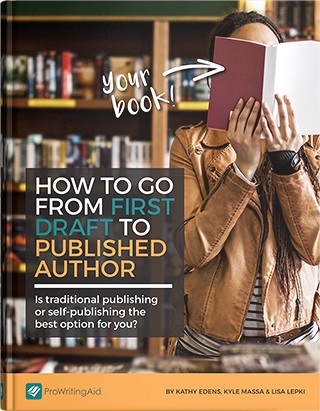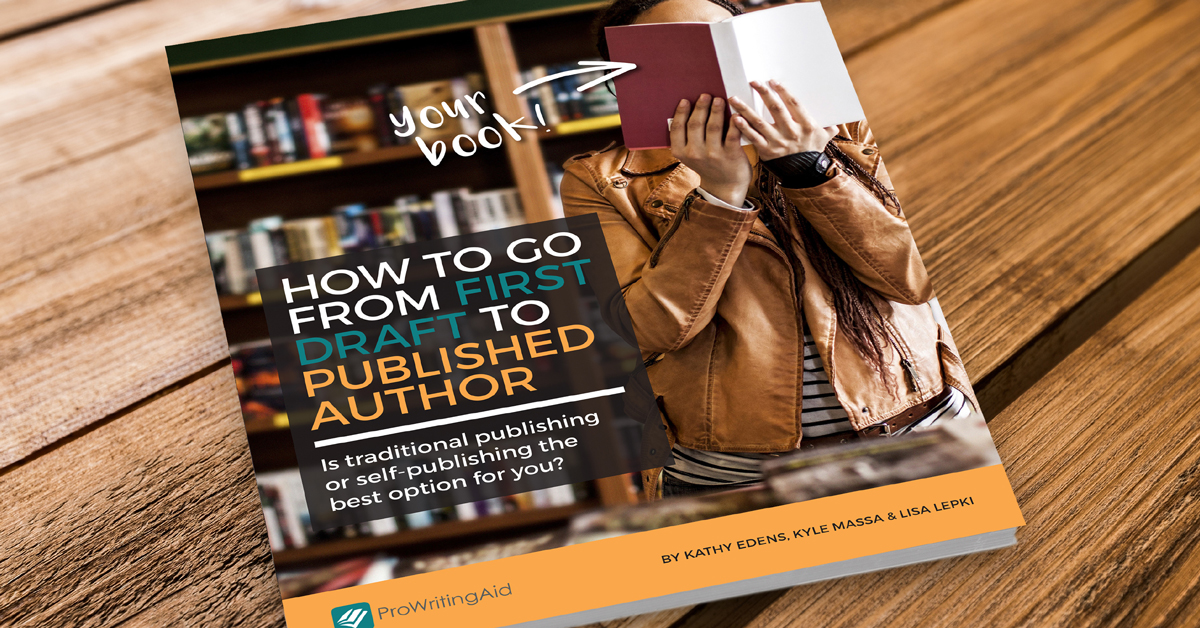
You can’t see your own writing objectively. It’s impossible. Since you gave birth to it, you’re so connected that you can’t see its faults and imperfections.
Before your manuscript goes anywhere near your editor's desk, you must perform rigorous self-edits. It is not good practice to send in writing that hasn't been polished to a very high standard. You want your editor to focus on the meat of your idea, not your passive voice!
We have discussed self-editing at length on the ProWritingAid blog, but check out this free training by Jerry Jenkins: Aggressive Self-Editing: How To Become Happy with Every Word You Write.
Remember to bring in your beta readers. Then, always hire a professional editor to look at your work objectively and help you polish it into the best possible story you can tell.
A professional isn’t someone with an English degree who just hung out a shingle. The best editors spend years at publishing companies gaining experience, often with years of mentoring by more experienced editors. They understand how to help you take your manuscript from rough draft to a finished masterpiece.
That said, just like authors who specialize in different genres, you need an editor who specializes. Maybe you need help with the big picture to make sure your narrative arc works or that you’ve fully fleshed out your characters. Or perhaps you need another pair of eyes to help you find silly punctuation and grammar errors. Let’s look at the different types of editors.
NOTE: This article is from our new book: How to Go from First Draft to Published Author
Developmental editing
This is the first pass after you’ve done your rigorous self-editing. A developmental edit usually ends in some rewriting, rearranging, and even deleting entire chapters. Your editor will write tons of notes on what’s working and what needs to change. He or she will give you the clarity you need to understand how readers will engage with your story.
A developmental editor is someone who can look at the big picture and scour your story for:
Plot
How well does your story arc work? Does it continually increase the tension and leave the reader with a satisfying ending?
Characters
Have you created three-dimensional characters who are engaging and memorable? Are there any characters that add nothing to your storyline? Can you delete or combine them with another character?
Point of view
Is your point of view consistent? Is it confusing or does it work well?
Pace
Are there lulls in the pacing? You know, those dead spots in the middle where absolutely nothing is happening to move your story forward.
Copyediting
If you have the bigger picture items under control, then you need an editor who can look at paragraph level details like transitions, rhythm, and excessive wordiness. This is a closer look at your manuscript that focuses on the language of your story to make it shine.
Your copy-editor plays a vital role in making sure all your facts check out, that your timeline is error-free and that there are no continuity errors.
If you’re going down the traditional publishing route, you can submit your manuscript after this stage, but if you’re self-publishing, you’ll need a proofreader as well.
Proofreading
This is the nitty gritty: spelling, grammar, punctuation and any corrections to layout or typesetting. Your proofreader looks at each word, piece of punctuation and formatting. Because errors will slip through. It happens to the best of us.
You want to present your best work to readers. They’re pretty savvy and will point out any errors or discrepancies they find, no matter how small. Some will even rate your work poorly because of simple errors you should have caught before hitting “Publish.”
How to find an editor
Now you know what type of editing you need done, let’s look at how you can find an editor. Here are a few suggestions:
Ask a trusted writer
We all know other writers; maybe you met one at the local coffee shop or writers’ group. Or maybe you’ve connected with someone online through a forum or social media. Cull your connections for names of editors whose style might meet your needs.
Read authors’ acknowledgments pages
Usually at the back of a book, authors acknowledge everyone who helped make their book a success, especially their editors. Read acknowledgements from books in the same genre to find an editor who specializes in your field.
Use a trusted source
There are three major respected sources within the industry: Writers & Artists, Society of Editors and Proofreaders, and Alliance of Independent Authors. All of the editors and proofreaders on their books are guaranteed professionals.
Once you have names, try to find online testimonials from other writers. You’ll make a better decision with more information. If you can’t find anything online, you can contact the editor to request a test edit of one chapter. You’ll likely have to pay for this service but it’s well worth the investment to see if his or her editing style fits your needs.
Finally, most editors are booked months in advance, so start the search process several months before you expect to finish your manuscript.
How to work with your editor
Remember, your editor is a professional with years of experience, someone who has read and evaluated dozens or even hundreds of manuscripts. You can trust their opinion and rely on them to have your story’s best interests at heart. An editor is dedicated to helping your story be the best possible representation of your vision as a writer.
Consider it a two-way relationship between professionals. You should treat your editor as you would any other professional you work with.
Make sure you and your editor agree on a set of expectations from both sides. For example, establish mutually agreeable deadlines and make sure you meet them. Answer emails and phone calls promptly. Respect their time and they’ll respect yours. Follow your agreements up with a contract.
Once you’ve covered the preliminaries, send your manuscript to your editor. Most ask you to send it via email in a Microsoft Word document. Your editor will use the “Track Changes” functionality to show you their suggestions. They might include extra documents that include other notes on structure, style, etc.
If this is your first book, the initial feedback can be a blow to your ego. Don’t open the email from your editor until you’re in the right frame of mind. Understand that you’re paying this person to give you constructive ways to improve your book. Your editor’s sole purpose is to critique your work, not pat you on the back. If you need someone to tell you how wonderful you are, send your manuscript to your grandma.
Don’t email your editor back immediately. Sit with her suggestions for several days. Try to look at them objectively to find the value. If you’re still responding emotionally, take a few more days to ruminate until you can accept your editor’s comments.
This doesn’t mean you should blindly go through your document or click on “Accept All” in Word’s Track Changes function. Spend the time needed to go through each suggestion and understand why your editor made it. It’s the only way you’ll learn from your mistakes.
Trust us… once you’ve gone through several edits, you’ll develop a thick enough skin so that the process improves your manuscript considerably. And you’ll find the next time you sit down to write, the experience has made you a better writer and storyteller.
Final thoughts
We’ve said it before and we’ll say it again: if you’re self-publishing, don’t forget to send your manuscript to a proofreader as the final step. You need that last pair of eyes so you’re putting your best work out there.
Seriously—well worth the money spent.



